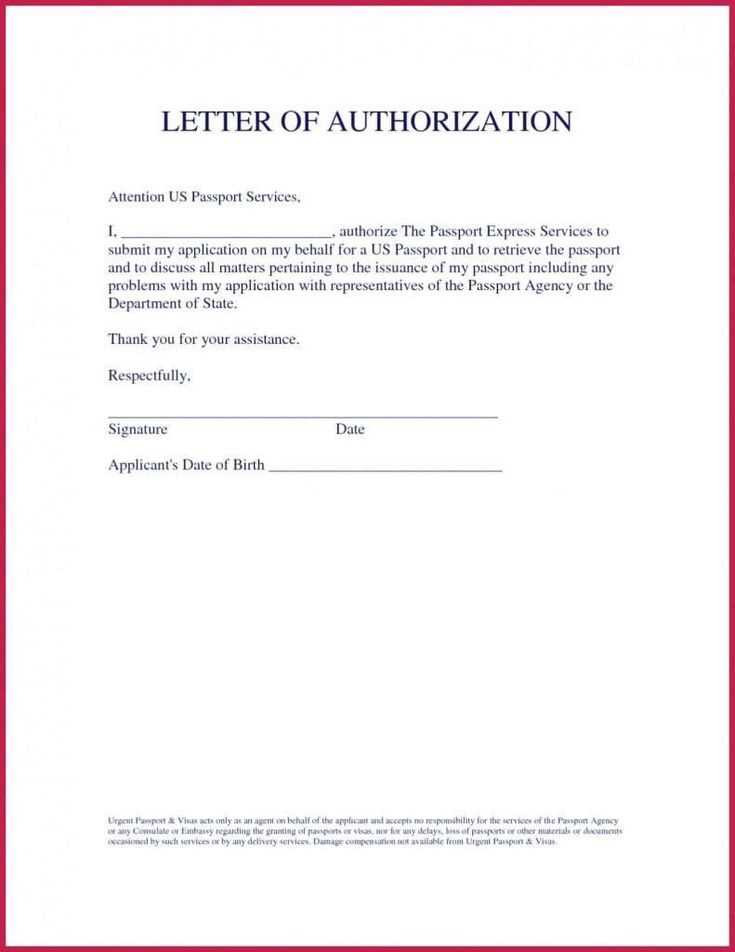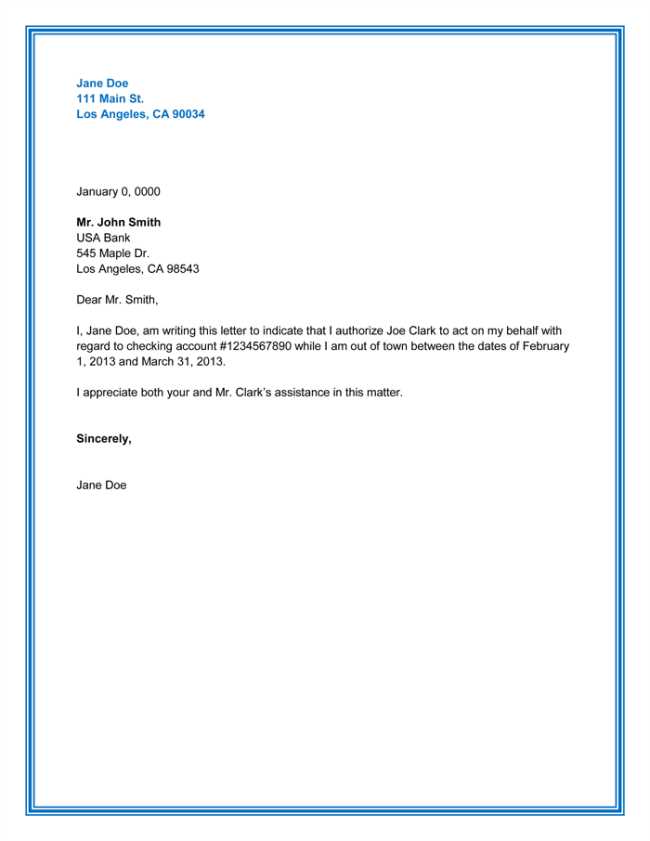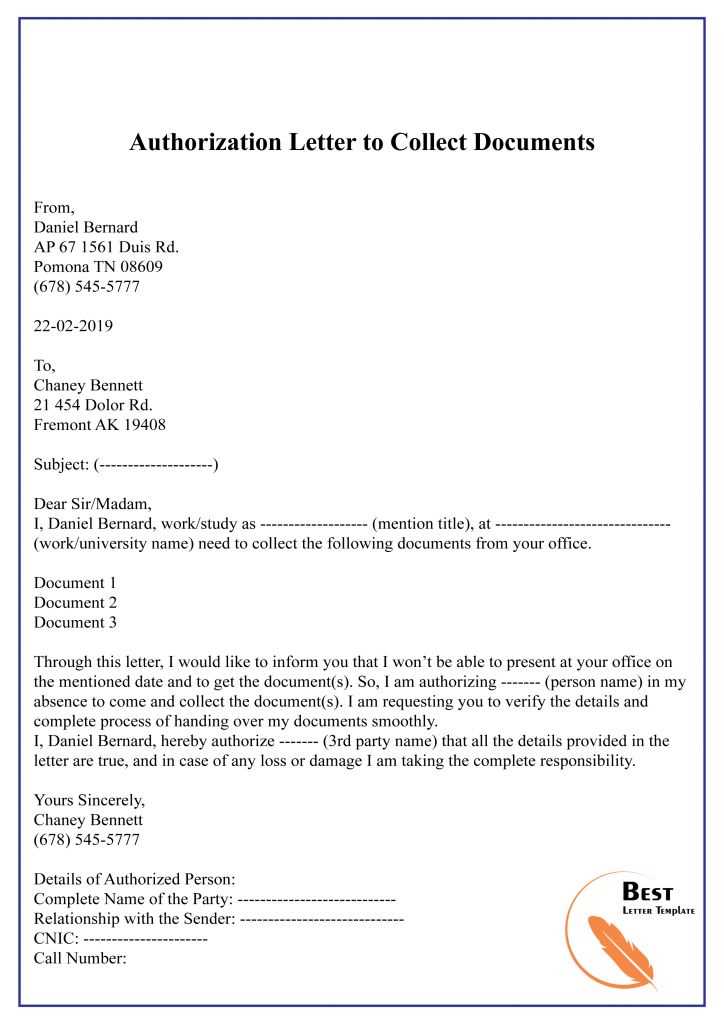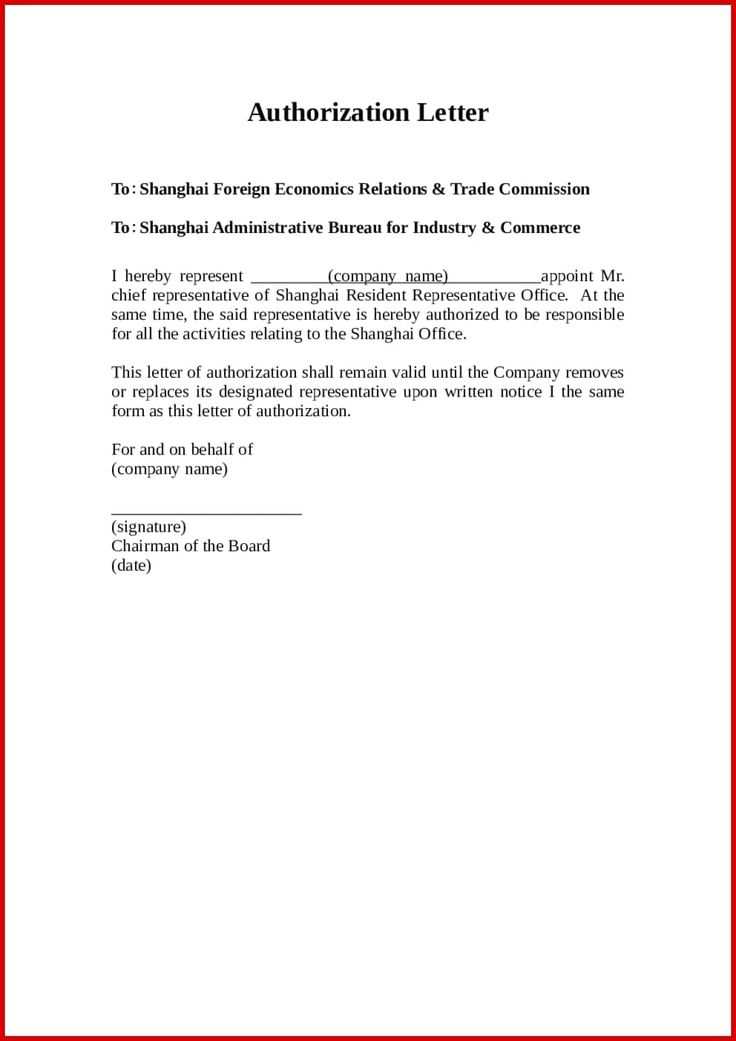Authorization Letter Template for Document Collection

In various situations, you may need to give someone else the right to act on your behalf. Whether it’s picking up a specific item or handling a formal process, it’s crucial to provide clear instructions and consent for the other person to complete the task. This is often done through a formal document that outlines your approval and provides the necessary details.
Creating such a document ensures that both parties are on the same page regarding the scope of the responsibility. It also protects both the giver and the recipient by clearly stating the terms and limits of the action. When well-structured, the written form becomes an essential tool for smooth and legally recognized transactions.
What is an Authorization Letter

This type of written agreement allows one person to grant another individual the right to act on their behalf in specific matters. It serves as formal permission for someone else to take actions, such as retrieving items or handling administrative tasks. The document must clearly outline the scope of the permission and the tasks authorized to ensure both parties understand their responsibilities and limits.
Typically, it includes the names of both individuals involved, the specific action being authorized, and any necessary details to identify the task. By using this method, the person granting the authority can ensure their intentions are clear and legally recognized, while the recipient gains the ability to carry out the task efficiently.
Essential Information to Include

For a clear and effective agreement, certain key details must be included to avoid confusion and ensure that the person acting on behalf of another is properly authorized. The primary elements of the content should provide a complete understanding of the task, the individuals involved, and any relevant timeframes.
Names and Identification: Always include the full names of both parties, along with any identification information if necessary, to ensure clarity and prevent any misunderstandings. Task Description: Clearly state the specific action or responsibility being granted to the individual. This should be as detailed as possible to avoid ambiguity. Duration and Limitations: Specify the timeframe during which the person is allowed to act, along with any boundaries on what they are permitted to do.
Signatures and Date: To validate the agreement, both parties should sign and date the document. This step confirms that all details have been acknowledged and agreed upon. Without these essential components, the arrangement may lack legal strength or clarity.
Steps to Create a Template

Creating an effective format for granting permission involves several key steps to ensure clarity and completeness. By following a simple process, you can draft a functional document that provides the necessary details while remaining clear and concise.
- Begin with the Title: Start by giving your document a clear heading that reflects the purpose of the agreement, such as “Permission to Act on Behalf.”
- Include Full Names: Clearly state the names of the person giving permission and the individual receiving the authority to act. Include any relevant identification details if necessary.
- Define the Action: Specify the task or responsibility being granted, along with any important details, such as location or conditions.
- Set Timeframe: Indicate the duration of the arrangement, including start and end dates, or if the permission is valid until further notice.
- List Limitations: If there are any restrictions or boundaries on the actions being permitted, they should be clearly outlined.
- Include Signatures: Both parties must sign and date the document to validate the agreement, ensuring both have acknowledged the terms.
By following these steps, you ensure that the document serves its purpose and provides clear guidance for all involved parties.
Situations Requiring an Authorization Letter
There are various circumstances in which a person may need to grant someone else the right to act on their behalf. These situations often involve handling specific tasks that require formal consent or when the individual cannot be present to carry out the action themselves. In such cases, having a formal document ensures the process runs smoothly and within legal boundaries.
When Handling Personal Items

One common situation is when an individual needs someone else to retrieve personal items, such as packages, certificates, or other possessions from an office, store, or institution. This arrangement is often necessary when the individual is unavailable due to travel, illness, or other commitments.
Managing Legal and Financial Matters
Another important scenario is dealing with legal or financial matters, such as signing contracts, filing paperwork, or managing accounts. In these cases, having a clearly written document ensures that the person acting on behalf of the individual has the necessary authority to carry out these responsibilities without issues.
Common Errors to Avoid

When drafting a formal document that grants someone the ability to act on your behalf, it’s important to avoid certain mistakes that could lead to confusion or even legal issues. Ensuring that the document is complete and clear is crucial for both parties involved. Here are some common errors to watch out for when creating such a document.
Vague or Incomplete Task Description: Failing to clearly define the action being authorized can lead to misunderstandings. Be specific about the task and include any necessary details, such as location or conditions, to avoid ambiguity.
Missing Dates or Timeframes: Not specifying the duration of the permission can cause confusion. Clearly state the start and end dates, or indicate if the authorization is valid indefinitely or until further notice.
Omitting Signatures: A document without signatures lacks legal validity. Ensure both parties sign and date the agreement to confirm that both understand and agree to the terms.
Overlooking Limitations: If there are any restrictions on the action, such as where or how it should be carried out, these should be explicitly mentioned. Failing to address limitations may result in actions being taken that are outside the intended scope.
Legal Validity of Authorization Letters
When granting someone permission to act on your behalf, it’s essential to ensure that the document holds legal weight. A properly structured and executed agreement provides clarity and protects both parties involved. The legal validity of such documents is governed by various factors, such as local laws, the nature of the task, and the completeness of the agreement.
For a document to be legally binding, it must typically contain certain elements, including clear consent from the individual giving the authority, as well as the explicit task being permitted. Without these crucial components, the document may not stand up in a legal setting.
In addition, both parties must sign the agreement for it to be considered valid. In some jurisdictions, notarization or witnesses may also be required for added legal assurance. Always ensure that you follow the relevant legal requirements based on your location and the nature of the actions being authorized.